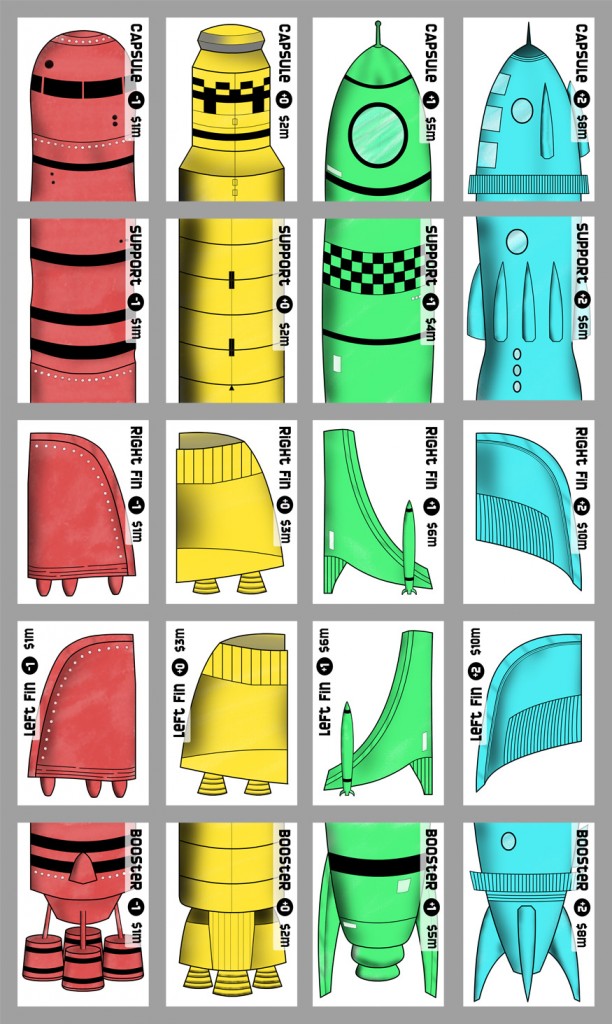I just finished laying out the game postcards for Six Gun, a quick little clapping game where you play gunfighters trying to shoot each other quickly. I talked a bit about the design of the physical cards themselves a bit over on unDesign, but I’d like to note a couple of things about the game design here, as well.
As I mentioned over there, it’s based on a childrens’ game called High Noon. The play is really almost identical, except for one or two bits that I changed. First, I added a limit of six bullets to the game; in the original, you can just go on loading and shooting forever. This seems okay at first, but in practice, it leads to any number of degenerate strategies that will make the game just go on and on – the “always hide” thing, the following by one thing, and so on. Which is totally fine for a playground game! Fun!
But my inclinations being what they are, I need to impose some kind of closure on the play, so I added the “six shots to win” rule. That way, if someone is stalling, the other player can rattle off half a dozen bangs and blow the lollygagger away. (You can still sandbag your opponent a little, or both jump right on doing load-bangs, but the “if you both shoot your last bullet simultaneously, you both lose” rule is my band-aid for that.)
The other major change was the addition of a verbal component to the game. This, it turns out, makes it so much harder, for me, anyway. Maybe I’ve got some kind of mouth-brain-hand dumbness, but it really takes a lot of concentration for me to only count down the bullets when I’m loading the gun, instead of shooting it. It’s pretty fun to break down in the middle of a game like this, though – it kind of reminds me of the simple/impossible 1-2-3 clapping warmup from improv – but it’s a good way to build that mental dexterity, and it definitely adds pressure when the you hear the numbers going up like that. Of course, my screwing it up all the time makes it a little harder to playtest, but it’s all part of the fun, in my opinion.
Fortunately for me, playtesting a game that only requires two people and plays in about fifteen seconds is really easy. This is where my design process falls apart most of the time – I usually either can’t get the bodies together to give something a good go-around, or I personally can’t find a gap in my ridiculous schedule to get new designs to the table. So, this was a refreshing little break from the larger stuff, and I think it worked out really well. Grab a partner and give it a shot, and let me know how it goes!
